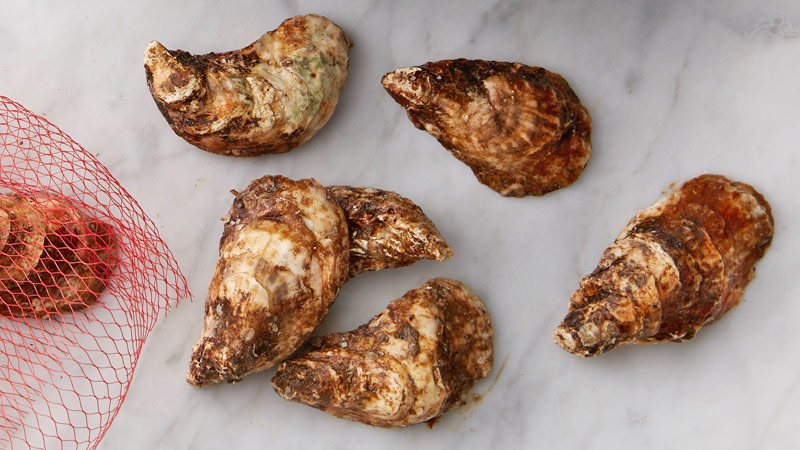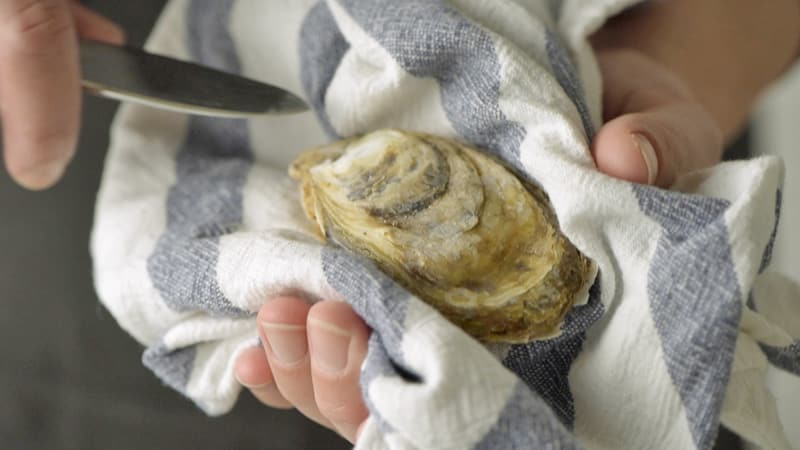(function() {
document.addEventListener('DOMContentLoaded', function() {
var componentMetadata = JSON.parse('\x7b\x22componentName\x22\x3a\x22ActionToolbar_d4f0b4cc-dd76-4537-857b-56997525ceb8\x22,\x22deferOptions\x22\x3a\x7b\x22deferComponent\x22\x3atrue,\x22deferType\x22\x3a\x22OnDemand\x22,\x22deferId\x22\x3a\x22r0fc551e378f142a7b1eb502fb058fa64\x22,\x22deferredContainerId\x22\x3a\x22\x2ffloatingActionToolbar\x2ffloatingActionToolbar_Interop\x22,\x22deferredContainerView\x22\x3a\x22InteropDeferWrapper\x22\x7d,\x22viewName\x22\x3a\x22ActionToolbar\x22\x7d');
var configuration = {"contentId":"1f80a924-ab30-4611-a8f0-88b2626f9326","toolbarSettings":{"id":"d4f0b4cc-dd76-4537-857b-56997525ceb8","regAction":"FAVORITE","eSourceCode":16797,"namePassedToEvents":"ArticleStandardLongFormToolbar","buttons":[{"providerName":"pinterest","providerNamePassedToEvents":"Pinterest","shareUrlFormat":"//pinterest.com/pin/create/link/?url={0}","id":"76def9a1-42e6-4e8d-b963-2bb41556cef1","allowedForAnonymousUsers":true,"type":"Social","displayName":"Pinterest","toggleDisplayName":"","namePassedToEvents":"Pinterest","cssClassName":"atButtonPinterest","privacyOptOutMessage":"\u003cdiv class=\u0027privacyMessage\u0027\u003e\n\u003ch3\u003eThis feature is not available with your current cookie settings.\u003c/h3\u003e\n\u003cp\u003eYou can \u003ca href=\u0027#\u0027 data-show-preference-center=\u00271\u0027\u003eupdate your privacy settings\u003c/a\u003e to enable this content. Please enable “Functional Cookies” to use this feature.\u003c/p\u003e\n\u003c/div\u003e","showPrivacyOptOutMessage":false},{"addFavoriteErrorMessage":"Sorry, something went wrong. Please save again.","removeFavoriteErrorMessage":"Error occurred while removing from favorites","regAction":"FAVORITE","eSourceCode":16797,"isCurrentUserAnonymous":false,"isFavoriteItem":false,"id":"718b4e01-b2be-40cf-8f0c-bca3b01db0ed","allowedForAnonymousUsers":false,"type":"Favorite","displayName":"Save","toggleDisplayName":"Saved","namePassedToEvents":"Favorite","cssClassName":"atButtonFavorite","privacyOptOutMessage":"\u003cdiv class=\u0027privacyMessage\u0027\u003e\n\u003ch3\u003eThis feature is not available with your current cookie settings.\u003c/h3\u003e\n\u003cp\u003eYou can \u003ca href=\u0027#\u0027 data-show-preference-center=\u00271\u0027\u003eupdate your privacy settings\u003c/a\u003e to enable this content. Please enable “Functional Cookies” to use this feature.\u003c/p\u003e\n\u003c/div\u003e","showPrivacyOptOutMessage":false},{"providerName":"facebook","providerNamePassedToEvents":"Facebook","shareUrlFormat":"//facebook.com/sharer/sharer.php?u={0}","id":"efdb520e-282a-4ae1-8a04-1d444442d622","allowedForAnonymousUsers":true,"type":"Social","displayName":"Facebook","toggleDisplayName":"","namePassedToEvents":"Facebook","cssClassName":"atButtonFacebook","privacyOptOutMessage":"\u003cdiv class=\u0027privacyMessage\u0027\u003e\n\u003ch3\u003eThis feature is not available with your current cookie settings.\u003c/h3\u003e\n\u003cp\u003eYou can \u003ca href=\u0027#\u0027 data-show-preference-center=\u00271\u0027\u003eupdate your privacy settings\u003c/a\u003e to enable this content. Please enable “Functional Cookies” to use this feature.\u003c/p\u003e\n\u003c/div\u003e","showPrivacyOptOutMessage":false},{"templateId":"ec5776a6-84cf-4f91-ba79-ace5d6ae2fa2","dialogHeading":"Email Article","emailCode":"TBSP_ContentEmail","dialogSettings":{"cancelButtonText":"Cancel","copyToSenderLabel":"Send a Copy to Myself","emailAddressesLabel":"* Email Address(es)","emailInstructionText":"Separate email addresses with commas","fromText":"From:","privacyPolicyText":"\u003cp\u003e\u0026copy;2026 General Mills, Inc. All Rights Reserved. This information will only be used to send an email to your friend(s) and will not be saved. Please read our \u003ca rel=\u0022noopener noreferrer\u0022 rel=\u0022noopener noreferrer\u0022 href=\u0022http://www.generalmills.com/company/privacy-policies/privacy-policy-us\u0022 target=\u0022_blank\u0022 shape=\u0022rect\u0022\u003ePrivacy Policy\u003c/a\u003e.\u003c/p\u003e","requiredFieldText":"* Required","sendButtonText":"Send","senderEmailAddressLabel":"* Your Email Address","senderFirstNameLabel":"* Your First Name","sendToText":"Send To:"},"id":"1b476610-b2bd-4a56-ba87-47a4798f6dcb","allowedForAnonymousUsers":true,"type":"Email","displayName":"Email","toggleDisplayName":"","namePassedToEvents":"Email","cssClassName":"atButtonEmail","privacyOptOutMessage":"\u003cdiv class=\u0027privacyMessage\u0027\u003e\n\u003ch3\u003eThis feature is not available with your current cookie settings.\u003c/h3\u003e\n\u003cp\u003eYou can \u003ca href=\u0027#\u0027 data-show-preference-center=\u00271\u0027\u003eupdate your privacy settings\u003c/a\u003e to enable this content. Please enable “Functional Cookies” to use this feature.\u003c/p\u003e\n\u003c/div\u003e","showPrivacyOptOutMessage":false},{"layoutParameter":"p%3d1","id":"ab4bf4fc-919a-4252-81ca-c39edb8eadf0","allowedForAnonymousUsers":true,"type":"Print","displayName":"Print","toggleDisplayName":"","namePassedToEvents":"Print","cssClassName":"atButtonPrint","privacyOptOutMessage":"\u003cdiv class=\u0027privacyMessage\u0027\u003e\n\u003ch3\u003eThis feature is not available with your current cookie settings.\u003c/h3\u003e\n\u003cp\u003eYou can \u003ca href=\u0027#\u0027 data-show-preference-center=\u00271\u0027\u003eupdate your privacy settings\u003c/a\u003e to enable this content. Please enable “Functional Cookies” to use this feature.\u003c/p\u003e\n\u003c/div\u003e","showPrivacyOptOutMessage":false}],"isSticky":true},"userSettings":{"isCurrentUserAnonymous":true,"isFavoriteItem":false,"isAnonymousUserWithFavorites":false},"pageAttributes":{"url":"https%3a%2f%2fwww.tablespoon.com%2fposts%2fhow-to-shuck-oysters","contentId":"1f80a924-ab30-4611-a8f0-88b2626f9326"},"recaptchaPublicKey":"6LfW_icUAAAAAL_CG700pddUxLNYIxgRJe3vOg2Z"};
var moduleName = 'actionToolbar';
var isVueModule = true;
GeneralMills.PandoSites.RegisterControlInstance(moduleName, configuration, componentMetadata, isVueModule)
});
})();
Introduction
You may love them or be totally mystified by them, but there’s nothing quite like fresh oysters. At first glance they may seem intimidating, but fresh, high-quality oysters have a delicate taste of the sea, and can be refreshing when eaten straight up or adorned with a variety of condiments.
If this is your first time delving into the world of oysters, be prepared to fall in love. The first steps to becoming an oyster aficionado are to learn the basics, like how to shuck an oyster. But there’s more to learn than just how to open oysters. We’ll take you through what they are and even how to prepare and clean them, so you can eat oysters like a pro.
What Are Oysters?
First, what are oysters? There are a wide variety of oysters and they range in size and taste depending on where they were grown; there are many species, but they’re all part of the saltwater bivalve mollusks family. They’re also filter feeders, meaning they’re crucial to filtering out plankton, bacteria and other particles from the bodies of water they live in. They’ve been harvested as food for centuries around the world and were considered more of a working class food in the early 19th century. As oyster populations have declined over the years, the cost has increased, which has elevated these once cheap commodities to fine dining delicacies.
Where to Get Oysters
Now that you’ve got a little background, you’re ready to start your own oyster adventure. But, where do you go? Do you dine at the super fancy, high-priced restaurant or the local seafood eatery? Either is fine, but the key is to go to a place that has a reputation for being seafood experts, with a knowledgeable staff and high volume of seafood served. The faster the product moves, the fresher it’ll be. You definitely don’t want the stuff that’s been sitting around for a long time. Aim for places where you know, or can see, the oysters being shucked within minutes of being served to you.
Tip for Buying Oysters
If you’re more of a DIY-er and want to give serving oysters at home a try, then there are a few steps to take into consideration. Obviously, as is the case with most seafood, make sure the oysters you pick are fresh and smell of the sea. Bad oysters will have a noticeable off-smell. If that’s the case, walk away. Make sure the shells are tightly shut or, if prodded, snap shut on their own. Any oysters with shells that are open and remain open before cooking or shucking are dead and should NOT be eaten.

The next big question: when should you eat oysters? You may have heard of the R-month rule. The R-month rule is based on the idea that oysters should only be consumed during months with an R in the name (so, basically eliminating the late spring through summer months). The reason is, oysters spawn during the summer months, so eating oysters during cooler months means you’ll be getting them at their peak. It’s also during the warmer months when warm water pathogens and toxins tend to thrive which can affect seafood. There are exceptions to the R-rule now as many oysters are farm-raised where water quality can be controlled and monitored, so eating oysters year-round isn’t totally unheard of anymore. Just be sure to know your sources before consuming.
How To Clean and Store Fresh Oysters
Once you’ve got your oysters you’ll need to do a little prep work. Here are some easy steps to know how to clean and prepare oysters.
Step 1: Using a stiff brush, scrub the outside of the oyster shell under cold running water to remove sand, dirt and debris.
Step 2: If you need to store your oysters for a short time, store them in the refrigerator. Do not store them in water and do not freeze them.
How to Shuck Oysters
This feature is not available with your current cookie settings.
You can update your privacy settings to enable this content. Please enable all cookies to use this feature.
You’ve picked out your oysters, cleaned them up and are planning on enjoying them fresh. But, how do you open an oyster? There are a variety of methods depending on the type you’re shucking, but we’ll show you the most basic way to open an oyster. Professionals can shuck an oyster in mere seconds, and while you may not be at the competing level yet, you’ll at least be able to open an oyster safely and with skill.
Important: always use a shucking knife (a special knife with a short thick blade about 2-inches long). Never try this with regular kitchen knives, which are too thin and sharp.
Step 1: For protection, wear heavy-duty glove or use a small towel wrapped around your hand that’s holding the oyster. The towel can also be used to cover part of the counter or table you’ll be shucking on.

Step 2: Face the top, fuller side of the oyster down (the bottom is the flatter side). Holding the oyster on top of the towel on the table, insert the blade of a shucking knife into the hinge of the oyster (don’t jam the knife in).
Step 3: Using your wrist, twist the knife. Don’t use too much force or speed during this step; otherwise it can lead to injury.
Step 4: Jiggle and twist the blade until there is a small pop and the shell should open. When you’re first learning you may have to repeat steps 3 and 4 a couple of times to get it right.
Step 5: Remove the flat half of the shell and keep the oyster meat and juice in the fuller top-shell.
Step 6: Slide the blade around the rest of the edge to disconnect the meat from the shell. Use the knife to cut the muscle that holds the meat to the shell so that the meat can slide right off. (There’s nothing worse than trying to eat meat still stuck to the shell.) Be careful not to lose the oyster juice.
Tips for Eating Oysters
Raw oysters taste amazing as they are with just their natural juices, also known as the liquor, but you can add a squeeze of lemon, or a dab of hot sauce. You don’t want to cover the taste, just enhance it. Use a small fork to dislodge the meat or just tip the shell with all the meat and liquor right into your mouth. And don’t be afraid to chew! Fresh oysters aren’t rubbery. They’re delicate and mild with a salty, briny taste.
Knowledge is power! Let Tablespoon teach you how to cook.